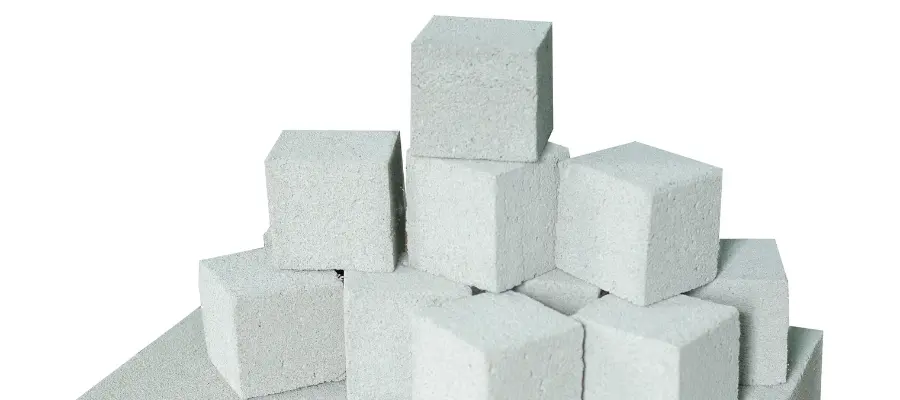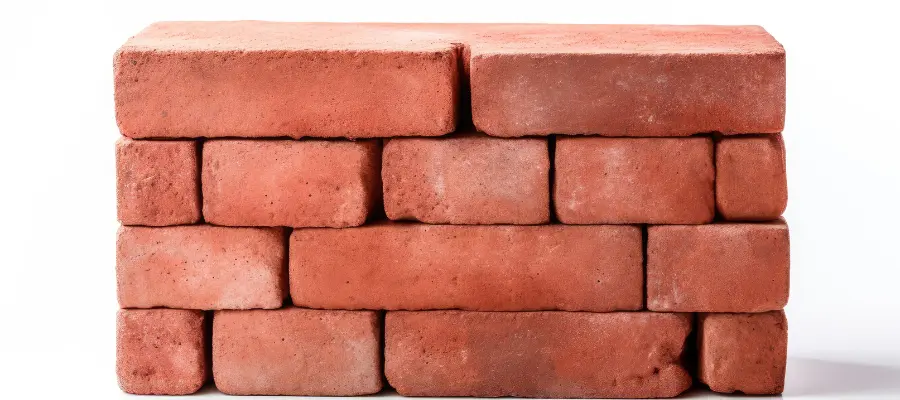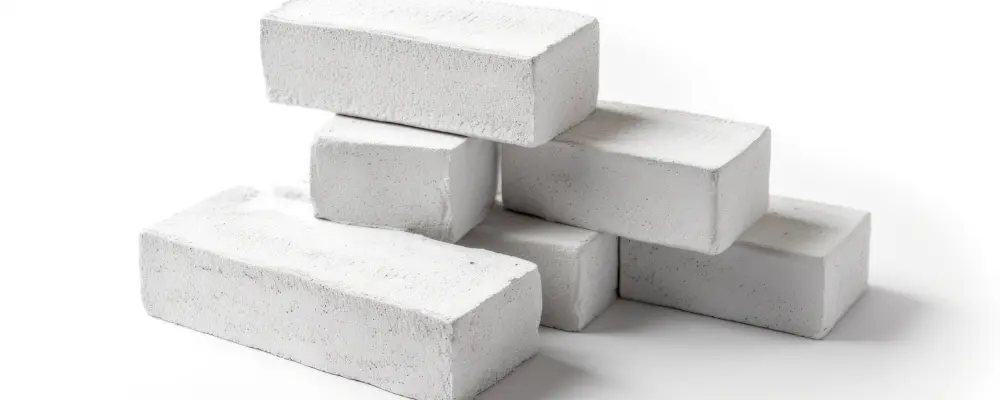Are you preparing to build your home? Are you starting to purchase building materials? Then, you must know that traditional red bricks are a crucial building material for masonry. But nowadays, AAC blocks are also gaining equal popularity as masonry bricks. However, many people are confused about whether ‘AAC block or red bricks’ is better for their home construction.
Don’t worry! In today’s blog, Brick & Bolt discusses the advantages and disadvantages of autoclaved aerated concrete (AAC) blocks vs. red bricks. It will help you choose the best option for your home construction.
Before we compare AAC blocks vs red brick, it’s essential to understand the different types of bricks available for construction.
What are AAC Blocks?

AAC blocks are a special type of precast building block. It’s easy to maintain and lasts a long time. They are great in thermal insulation and durability, So buildings made with AAC blocks stay cooler in hot weather, helping save money on air conditioning bills. AAC blocks are also lightweight, reducing the amount of steel and concrete needed for home foundations and structures. Overall, using AAC blocks can save money on construction and energy costs compared to other building materials.
Advantages of AAC blocks
- AAC blocks are lightweight but strong, making them easy to handle and install with regular tools.
- They come in large sizes, so a minimum number of blocks is sufficient. This speeds up construction and uses less mortar between joints.
- Since AAC blocks are light, the overall weight of the building is reduced. This is helpful in earthquake-prone areas and allows less steel reinforcement.
- AAC is inorganic so it won’t get damaged by termites or pests.
- In multi-story buildings, it reduces the amount of steel and concrete required for structural support.
- Their large size and easy installation make transportation to the upper floors simpler.
- Faster construction due to reduced wall curing time.
- AAC has excellent insulation properties that keep buildings cooler in summer and warmer in winter.
- This insulation helps reduce energy costs for air conditioning.
- There is minimal wastage compared to other masonry units.
- While initial costs may be higher, the long-term savings on materials and labour can make AAC blocks more economical overall.
Disadvantages of AAC blocks
- The cost of making an AAC block is higher than that of some other masonry units.
- The smooth surface of AAC blocks can sometimes make it difficult for the plaster to stick to the walls. Thus, during manufacturing, attention should be paid to slightly roughening the block surface for better adherence.
- Since AAC is a porous, aerated material, it requires a protective coating or finishing layer. If left exposed without a sealant, paint, or cladding, the blocks could deteriorate or become damaged over time from moisture absorption.
What are Red Bricks?

Red bricks are a very old and common building material made from clay. First, the clay is shaped, then dried, and finally, heated in an oven. This makes strong red bricks.
Red bricks are strong, so they can be used to construct the main parts of buildings, like walls, foundations, arches, paths, and bridges. However, because of their attractive red colour and texture, they are also used for decorative purposes. Red bricks can make landscaping features, exterior wall facings, and other architectural designs look nice.
Advantages of Red Bricks
- Red bricks are easy to work with during construction.
- The raw materials needed to make red bricks (clay, sand, lime) are widely available, making them an economical choice.
- Red bricks require little maintenance once installed and are very durable and long-lasting building materials.
- when compared to cement bricks, Red bricks are compressive strength is sufficient for typical construction needs like houses and low-rise buildings.
- Different brick sizes and orientations allow for various attractive textures and patterns on the surface.
- If a brick structure needs to be demolished, it is a comparatively easy and fast process compared to concrete.
- Used red bricks can be reused or recycled for other purposes after demolition.
Disadvantages of Red Bricks
- Brick masonry is more time-consuming compared to some other masonry materials.
- Red bricks may not be suitable for load-bearing structures in areas open to major earthquakes due to their weight and lack of reinforcement.
- The porous nature of clay bricks allows water absorption, which can lead to efflorescence (salt deposits) forming on the surface over time.
- If not properly cleaned and maintained, rough brick textures can promote mould/mildew growth.
- Continuous mining of soil and clay to make bricks depletes fertile topsoil resources needed for agriculture.
- Red bricks are quite heavy, requiring more structural steel and increasing overall construction costs compared to lighter materials.
Comparing AAC Blocks Vs Red Brick
| AAC Blocks | Red Brick | |
| Raw Materials | AAC blocks are produced from fly ash, cement, lime, gypsum and an aeration agent. | Red bricks are made from clay, sand, lime, iron oxide and Magnesia. |
| Available Size | Standard sizes of AAC blocks are 400-600×100-200×100-300mm. The dimensions vary from manufacturer to manufacturer. | Red bricks are available in the following modular sizes: 190 x 90 x 90 mm and 190 x 90 x 40 mm. Additionally, they come in non-modular sizes of 230 x 110 x 70 mm and 230 x 110 x 30 mm. |
| Compressive Strength | The compressive strength of AAC blocks varies between 3 to 4.5 N/mm2 | The compressive strength varies from class to class and hence lies between 2.5 to 3.5N/mm2. |
| Dry Density | The dry density of the AAC block varies from 451 kg/m3 to 1000 kg/m3. | Dry density of red bricks varies from 1600 kg/m3 to 1920 kg/m3 |
| Water Absorption | The water absorption of AAC blocks is around 10% of their weight. | The water absorption of red bricks should be less than 20% of their weight. |
| Thermal Conductivity | It is recommended that the thermal conductivity of AAC block fall within the range of 0.21- 0.42 W/mk. | It is recommended that the thermal conductivity of red bricks fall within the range of 0.6 to 1 W/mK. |
| Cost | AAC blocks are somehow more expensive but require minimum mortar. | While red bricks are cheap, the overall cost is higher due to mortar requirements. |
| Water Usage | AAC blocks are cured using steam, resulting in reduced curing needs and, therefore, lower water and electricity consumption. | Red bricks require more water for curing, leading to higher electricity bills and labour costs. |
Conclusion
When choosing between AAC blocks and red bricks for construction, both have pros and cons. AAC blocks offer better insulation, lighter weight, and speedy constructions, making them more energy-efficient and cost-effective in the long term despite higher upfront costs. Red bricks are traditional, durable, and aesthetically appealing but heavier, requiring more reinforcement and having higher overall costs. AAC blocks are suitable for energy-efficient buildings in hot climates, while red bricks may be preferred for their classic look in certain architectural or landscaping styles. However, their choice depends on the project’s budget, climate, structural needs, and desired aesthetics.

